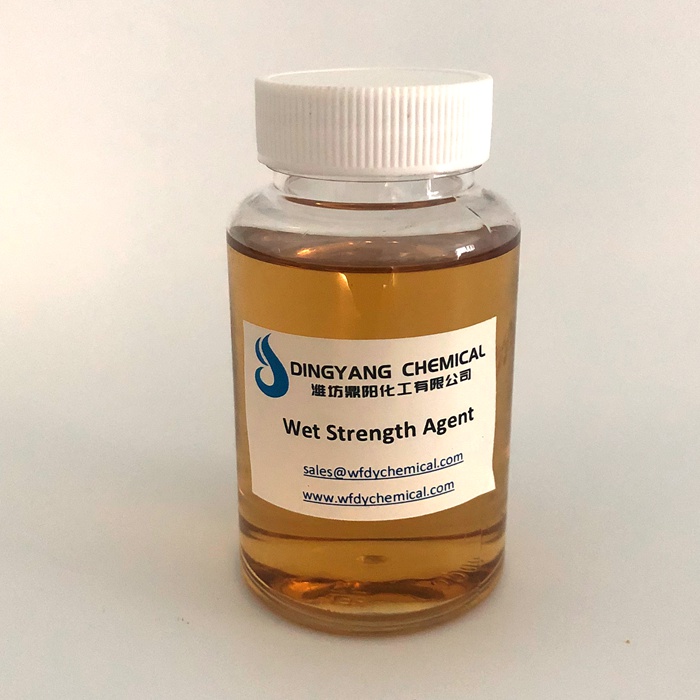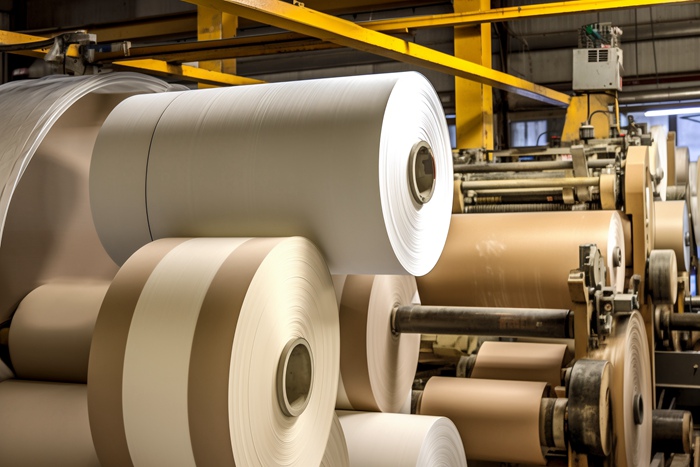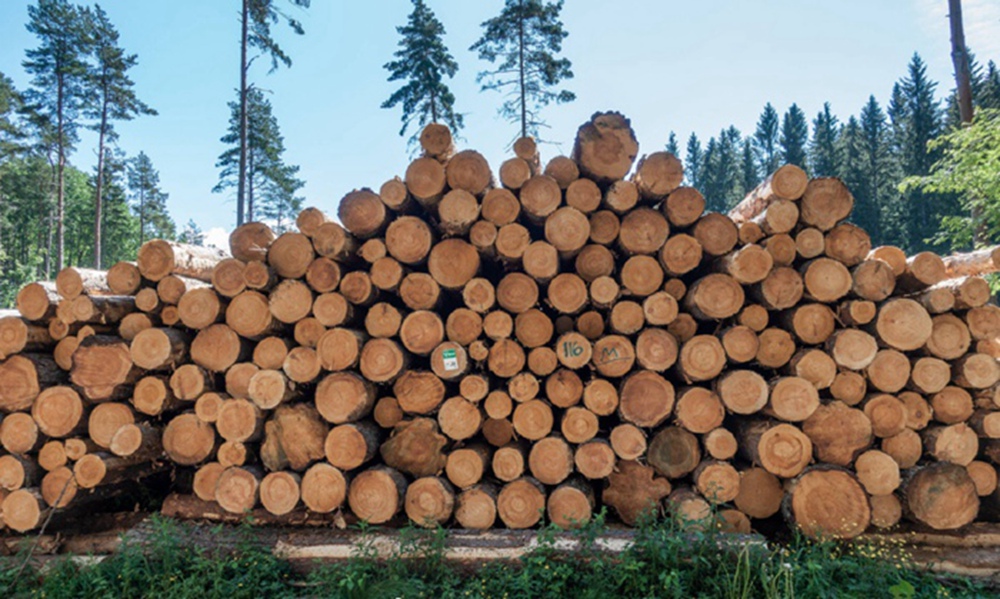Discussion on commonly used wet strength agents for papermaking
Keywords: wet strength agent, mechanism of action, development trend
Adding various polymers to increase paper strength is a hot topic in today’s papermaking industry. my country’s papermaking industry has developed rapidly in recent years. However, due to the shortage of wood resources in my country, it has to use a large amount of grass and waste paper raw materials and fillers. This will cause a large loss in paper strength. In addition, people’s requirements for the strength of high-grade, low-quantity paper are becoming more and more urgent. Therefore, using papermaking enhancers to solve the strength problem is one of the preferred methods. A class of fine chemicals used to enhance the strength of paper and paperboard is called enhancers. There are two ways to enhance paper: one is to add enhancers to the pulp, and the other is to add surface enhancers during papermaking. Surface enhancers can be classified as surface treatment agents. This article mainly introduces the wet strength agents in the pulp enhancers and their enhancement mechanisms [1-3]. 1 Wet strength agent
Generally, when paper is soaked in water or saturated with water, its strength loses 90% to 96%, and the remaining 4% to 10% of the strength is the wet strength. When chemical reagents are added to the paper, the wet strength can reach more than 15%. Such paper is wet-strength paper, and the added chemical reagents are wet strength agents.
1.1 Mechanism of action of wet strength agent
Wet strength agent can form a cross-linked network on the fiber surface. The composition of this cross-linked network is very complex, including cross-linking between added polymer molecules and cross-linking between added polymer molecules and fibers. The latter is also called co-cross-linking. Co-cross-linking can be divided into: covalent bonding (such as chemical bonding between wet strength agent and hydroxyl groups of cellulose, hemicellulose, and lignin residues), coordination complexation (such as polar bonds in added polymers and cellulose through metal ions to form coordination complexation), and hydrogen bonding and strengthening of intermolecular interactions.
1.2 Commonly used wet strength agents and new environmentally friendly wet strength agents
Wet strength agents have different effects in different application environments, and the general addition amount is 0.5% to 1.0% (for absolutely dry fibers). Wet strength agents used in the paper industry are usually divided into two categories, namely formaldehyde resin (which can be divided into urea-formaldehyde and melamine-formaldehyde resin) and polyamide epichlorohydrin resin. Polyethyleneimine, dialdehyde starch, polyacrylamide with glyoxal substituents and other substances are also used in special cases. Glyoxal can also be used, but not in the wet end. 1.2.1 Polyamide epichlorohydrin (PAE) Polyamide epichlorohydrin resin is thermosetting and can be polymerized into water-soluble by heating, so the storage temperature should be lower than 30°C. PAE must be stored under acidic conditions so that it does not form epoxy groups, and alkali should be added when used. Once the ring is closed, an epoxy group is formed and a cross-linked structure is formed with the fiber hydroxyl group to produce the required wet strength. When the pH of the solution is greater than 5, the dilute solution gels. In order to maintain the stability of the resin, the resin should be acidified to a pH of 3.5-6 at the end of preparation. PAE has many advantages as a wet strength agent, such as non-toxic, ripening under medium alkaline conditions, high wet strength of finished paper, good water absorption, and retention and drainage effects. PAE resin can be used with an anionic reinforcing agent to easily produce a reinforcing effect. Effective anionic resins are APAM and carboxymethyl cellulose or anionic latex. 1.2.2 Urea-formaldehyde resin (UF) Urea-formaldehyde resin is a resinous substance formed by the condensation of urea and formaldehyde. During the condensation process, the molecular weight increases, the viscosity of the reaction medium continues to increase, the reaction continues, and the resin becomes insoluble in water. Therefore, the condensation reaction can obtain water-soluble and organic solvent products according to the controlled conditions. These products have the appearance of colorless to light-colored liquid or white solid, are odorless, and have good light resistance. Urea-formaldehyde resin as a reinforcing agent is generally used for photographic base paper, sea paper, map paper, multi-layer paper bag paper and poster paper, etc. Urea-formaldehyde resin is widely used in industry for formaldehyde and melamine. In addition to giving paper strength, it can also increase paper’s wear resistance, folding resistance, elongation, wet paper tearing force and shrinkage stability. Experiments have shown that when melamine resin is used in a tank, the shorter the resin aging time, the higher the wet strength, and the difference in wet strength increases with the increase in the amount of resin added. When the resin is used in a tank, the ratio of amino to aldehyde has an effect on the wet strength efficiency. The higher the formaldehyde content, the higher the wet strength efficiency. 1.2.3 Polyethyleneimine (PEI) The original method of making ethyleneimine monomer is to react ethanolamine with sulfuric acid to generate aminoethylsulfuric acid, then add alkali to convert it into ethyleneimine, control the polymerization reaction, and use various acidic catalysts to achieve it. Its monomer is very toxic, but the polymer is a safe substance. The mechanism of action of polyethyleneimine is similar to that of cationic UF and MF resins, but the resulting wet strength level is lower than that of thermosetting resins. 1.2.4 Melamine-formaldehyde resin (MF) Melamine-formaldehyde resin is developed from urea-formaldehyde. They can be made into cationic, anionic or non-ionic resins, but only cationic resins are used in the wet end of paper machines, while anionic and non-ionic resins are used for amine coating. MF is a water-soluble resin formed by the condensation of melamine and formaldehyde under acidic conditions. MF resin is used as a wet strength agent and is mainly used in the production of paper such as banknote paper and chart paper. 1.2.5 New environmentally friendly wet strength agents The commonly used wet strength agents mentioned above have good strengthening effects, but these wet strength agents still have some disadvantages to a greater or lesser extent. For example, amino resins need to be stored under acidic conditions, and the product stability is poor. They often gel during storage. They also contain residual formaldehyde, which will also be released during production and use, causing harm to the human body and the environment[9]. PAE is incompatible with anions. The addition point on the paper machine should be far away from the addition point of anions (such as rosin sizing agents). Otherwise, PAE will react with rosin to form foam and precipitate. At the same time, AOX will be measured in the product and white water system during use[10]. In view of environmental protection requirements and taking into account wet end chemical factors such as pulp acceptance curing value, compatibility with other additives, single-pass retention rate, uniform distribution and anti-interference ability, the development of a new generation of pollution-free and high-efficiency wet strength agents is an inevitable development trend in the future. Chitosan and polycarboxylic acid are new environmentally friendly wet strength agents that meet this trend. Chitosan is the most actively studied wet strength agent for papermaking. It is a derivative formed by removing the acetylation group of chitin. It is a high molecular linear polymer with sufficient bonding strength to fibers and the ability to bridge between fibers. It is also a natural cationic polymer with many positive charge centers and hydrogen bond centers on the molecular chain. It is easy to form ionic bonds with negative charges on fibers and hydrogen bonds with non-ionic surfaces on fibers. Therefore, it can be used as a wet strength agent. If an appropriate amount of chitosan is added to the pulp, the wet strength of the newsprint, writing paper, map paper, and cigarette paper produced will be significantly improved. At the same time, many studies have shown that chitosan grafted polyacrylamide reinforcing agent is better than chitosan and is particularly suitable for papermaking with low weight. In the semi-chemical pulp for the core layer of corrugated board, adding chitosan and PAE at the same time can increase the dry strength and wet strength of the paper at the same time. It has been reported in the literature [11-12] that the wet strength/dry strength of paper sheets can exceed 60% after post-treatment with certain multifunctional carboxylic acids. The paperboard treated with it also shows better dimensional stability and stiffness. Moreover, the ester crosslinks in the treated paper can be hydrolyzed at room temperature, so the wet-strength paper is easy to recycle. The main disadvantage of this method is that the folding endurance and tensile strength of the treated paper are significantly reduced. At present, there are two main types of multifunctional carboxylic acids: one is the low molecular weight homopolymer (PMA) and terpolymer (TPMA) wet strength agent of maleic acid, and the other is the high molecular weight carboxylic acid-polyethylene maleic acid (EMA) wet strength agent. As new environmentally friendly wet strength agents, chitosan and multifunctional carboxylic acids have been recognized for their reinforcing effect on paper, but there are still some shortcomings. Further research is needed to enable them to achieve industrial production as soon as possible and become a widely used new type of efficient and environmentally friendly wet strength agent.
2 Conclusion
Entering the 21st century, environmental protection has become a consensus of countries around the world. Strict environmental legislation requires that papermaking additives must be low-pollution chemicals and should be biodegradable, thereby reducing the toxicity of paper mill wastewater and various indicators such as BOD5 and COD. From the perspective of the entire research and development of wet strength agents, its development direction is to develop new wet strength agents with low cost, good effect and environmental friendliness. The development of a new generation of pollution-free wet strength agents has become an inevitable development trend in the future.



